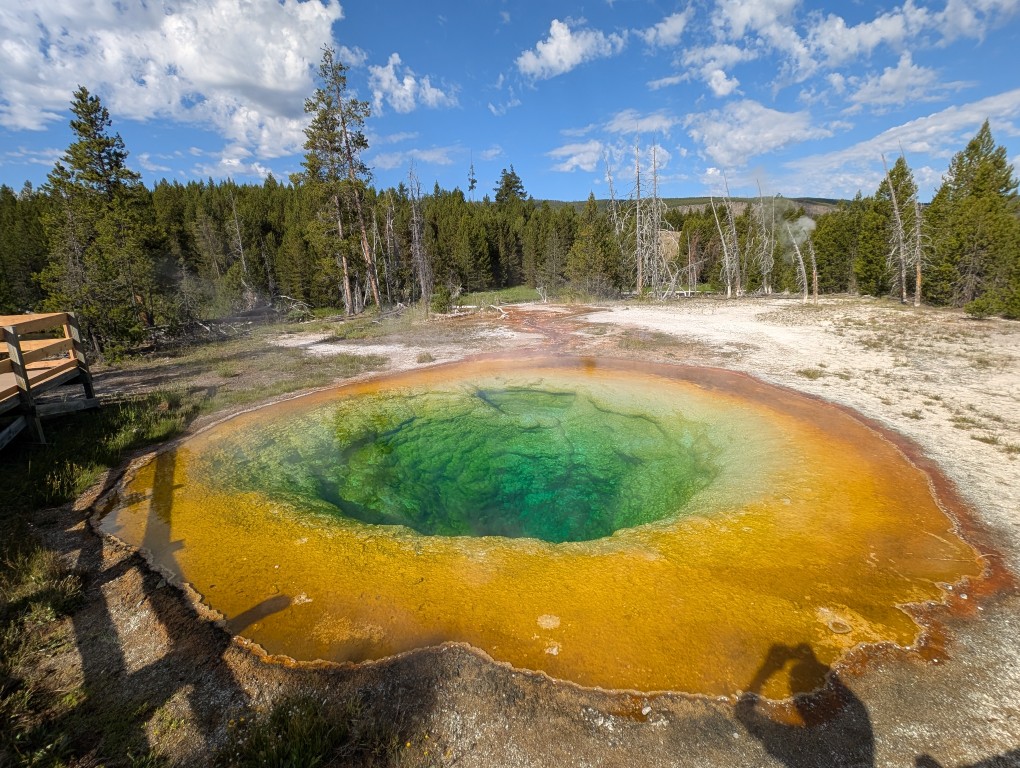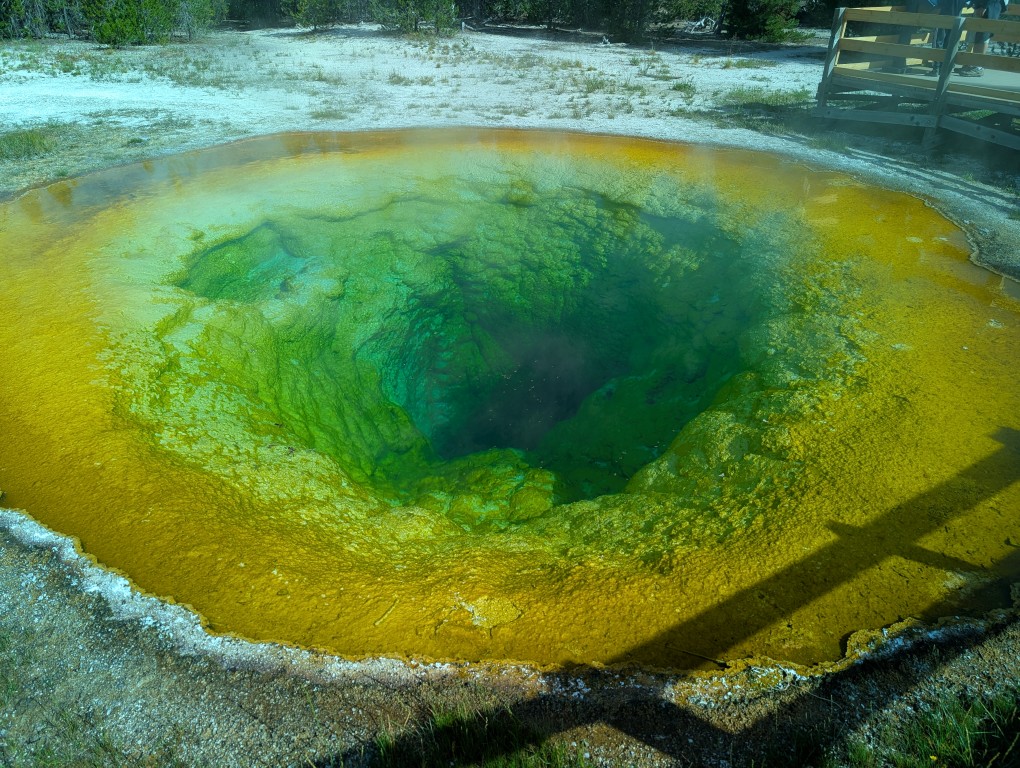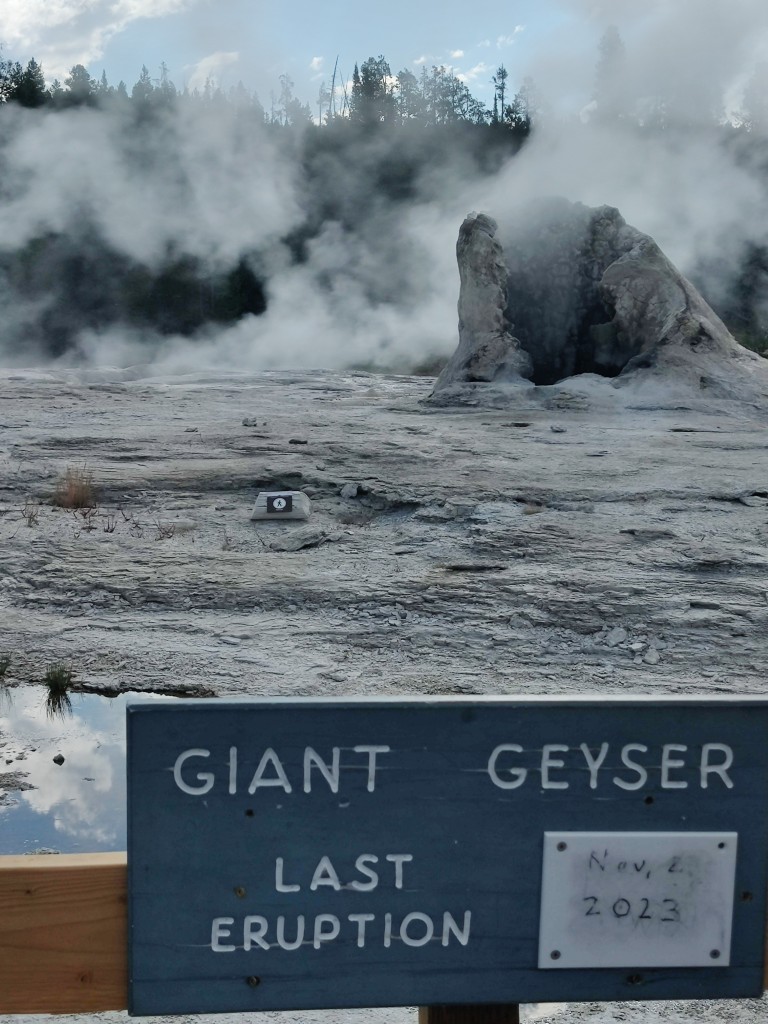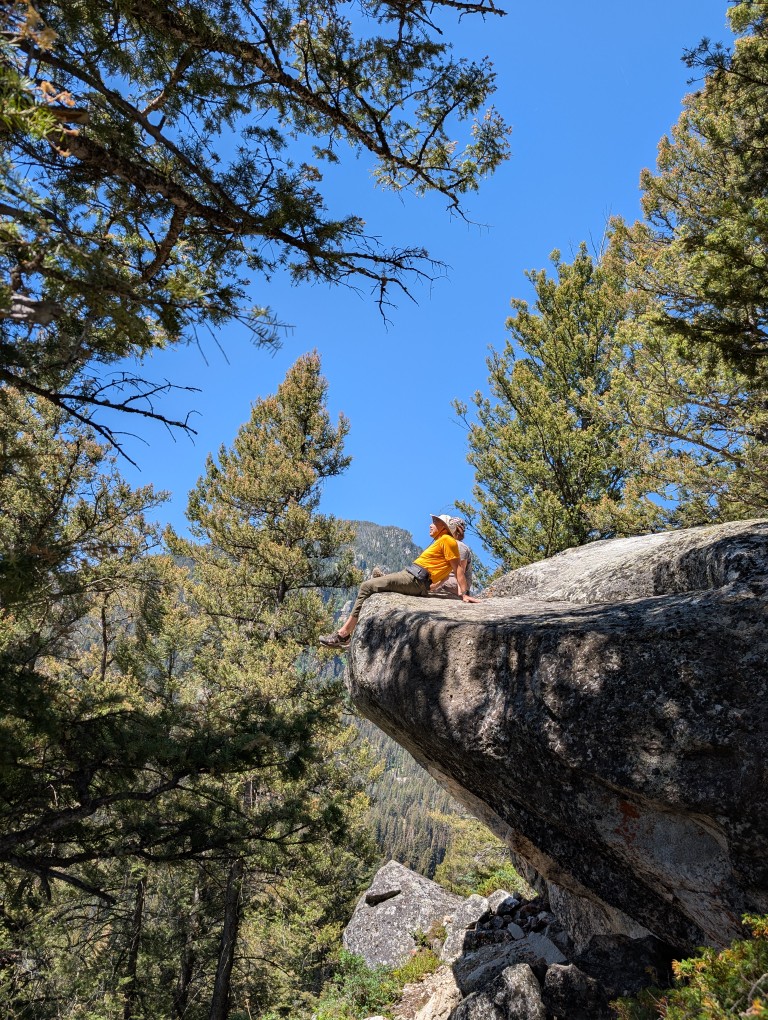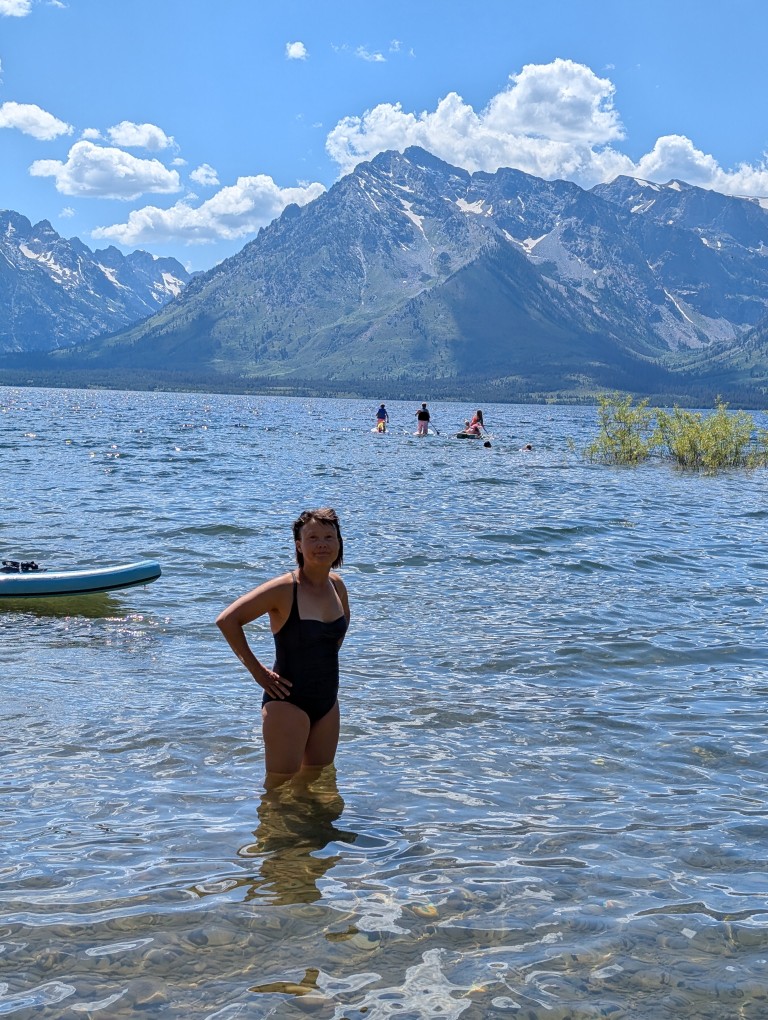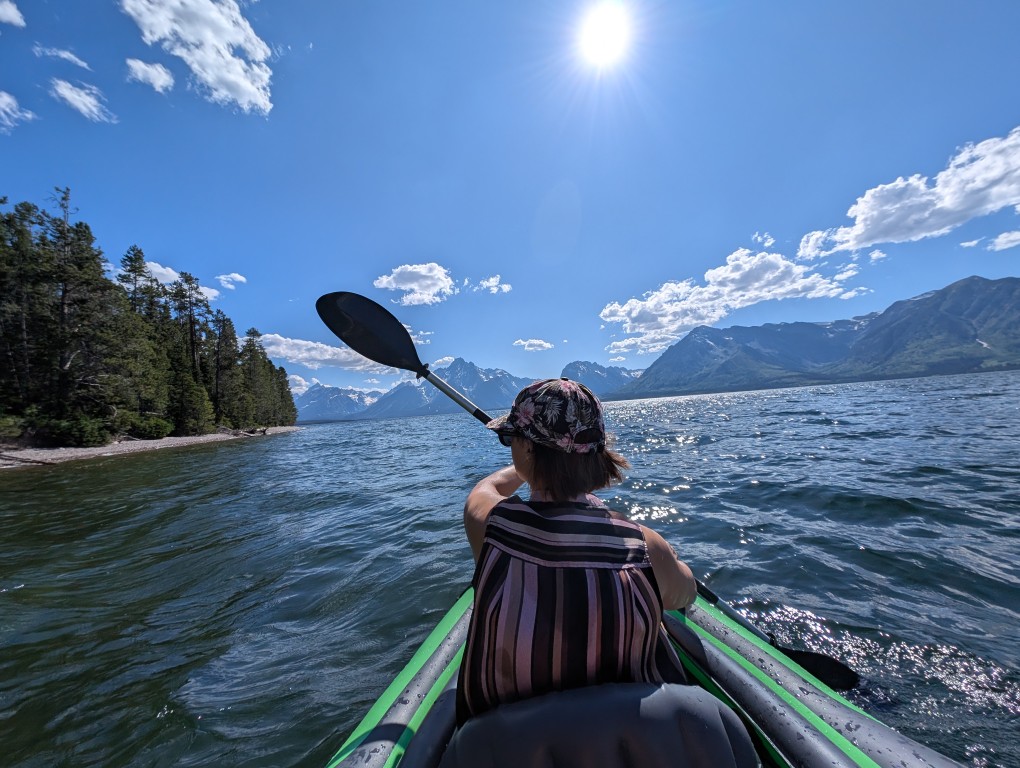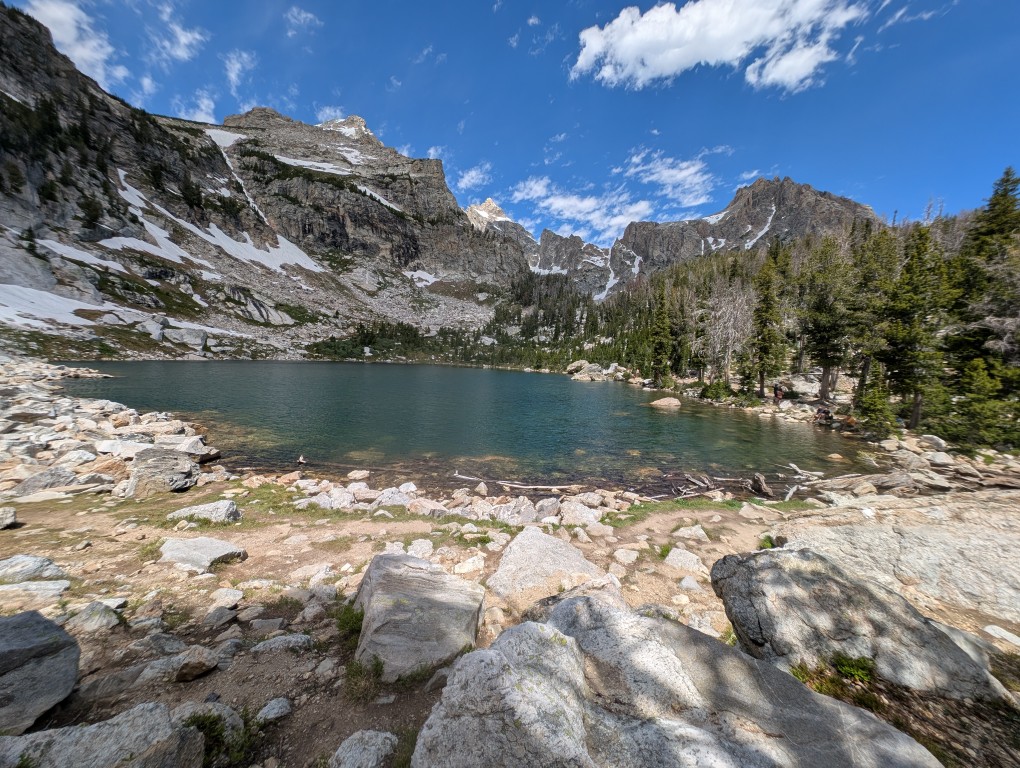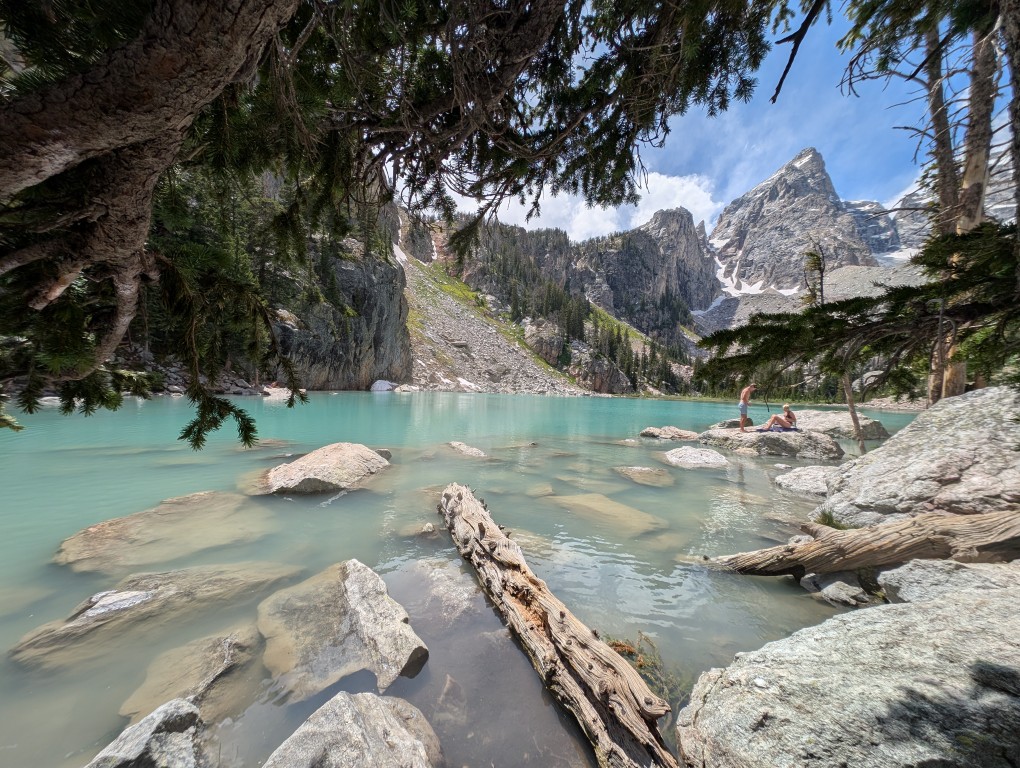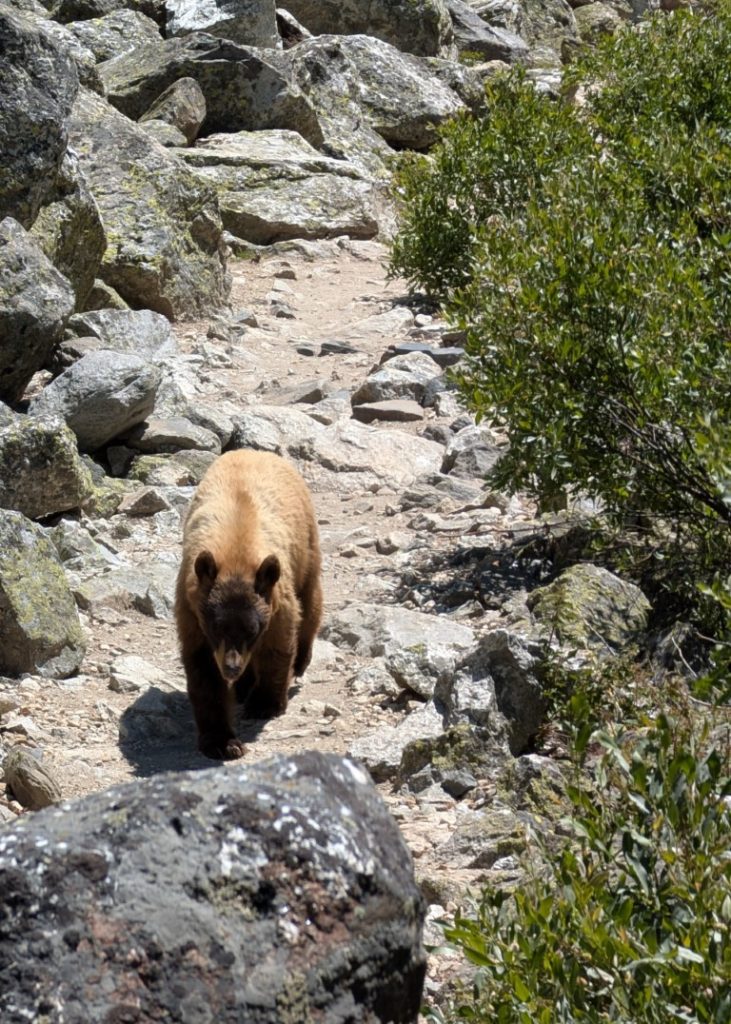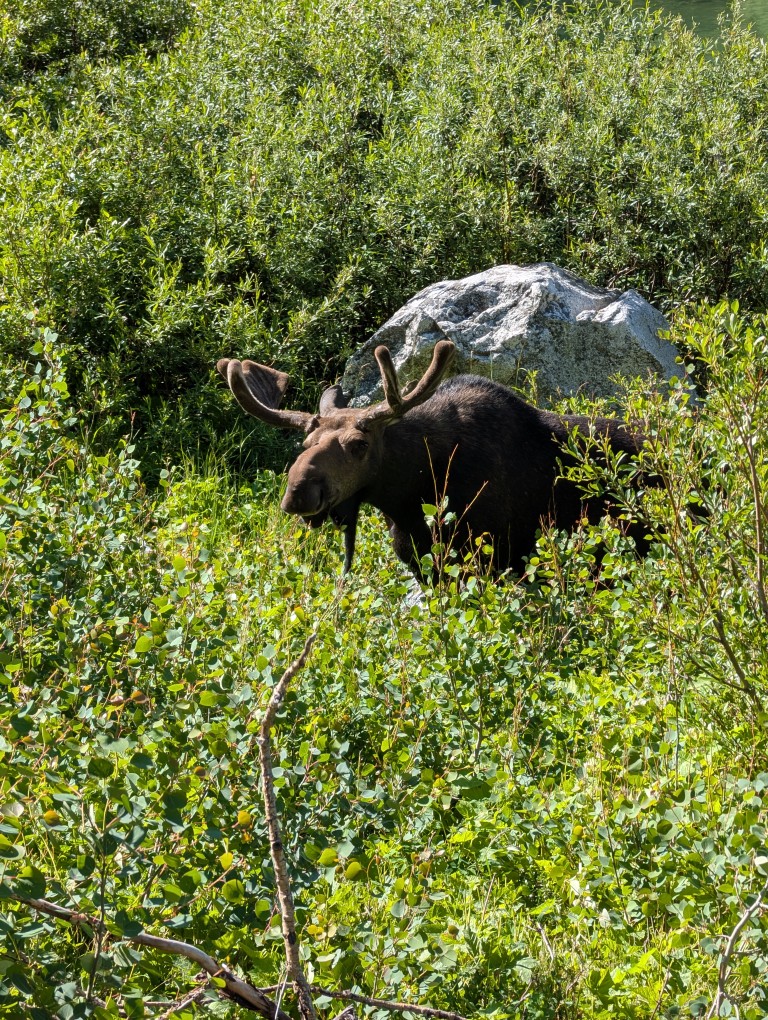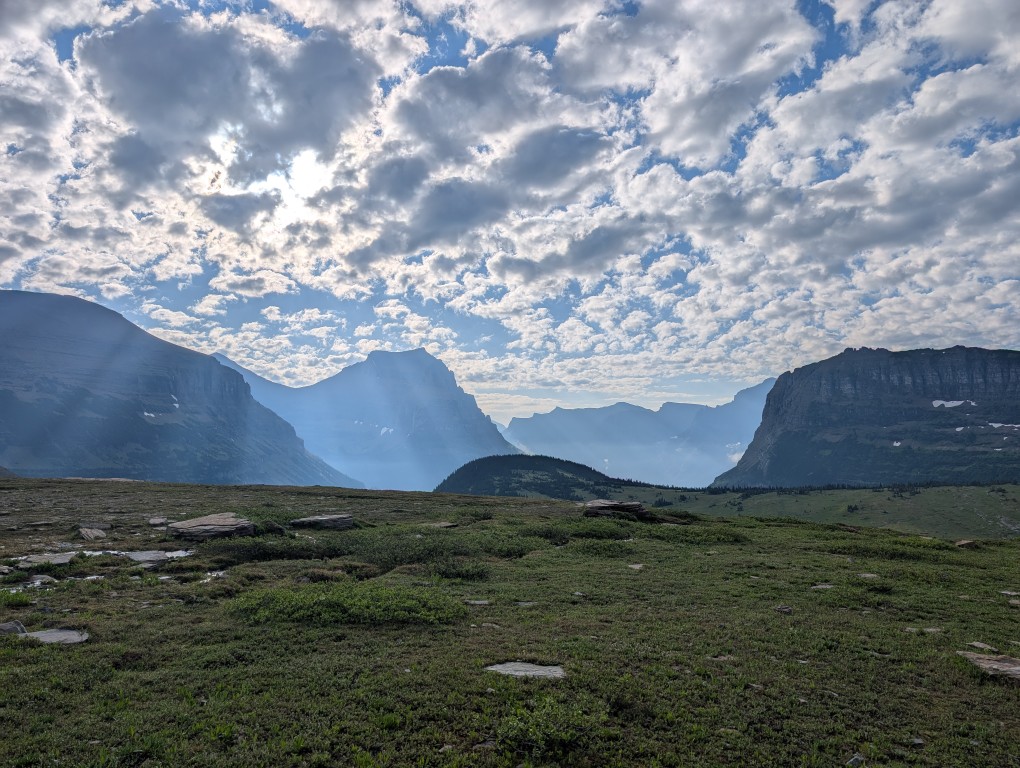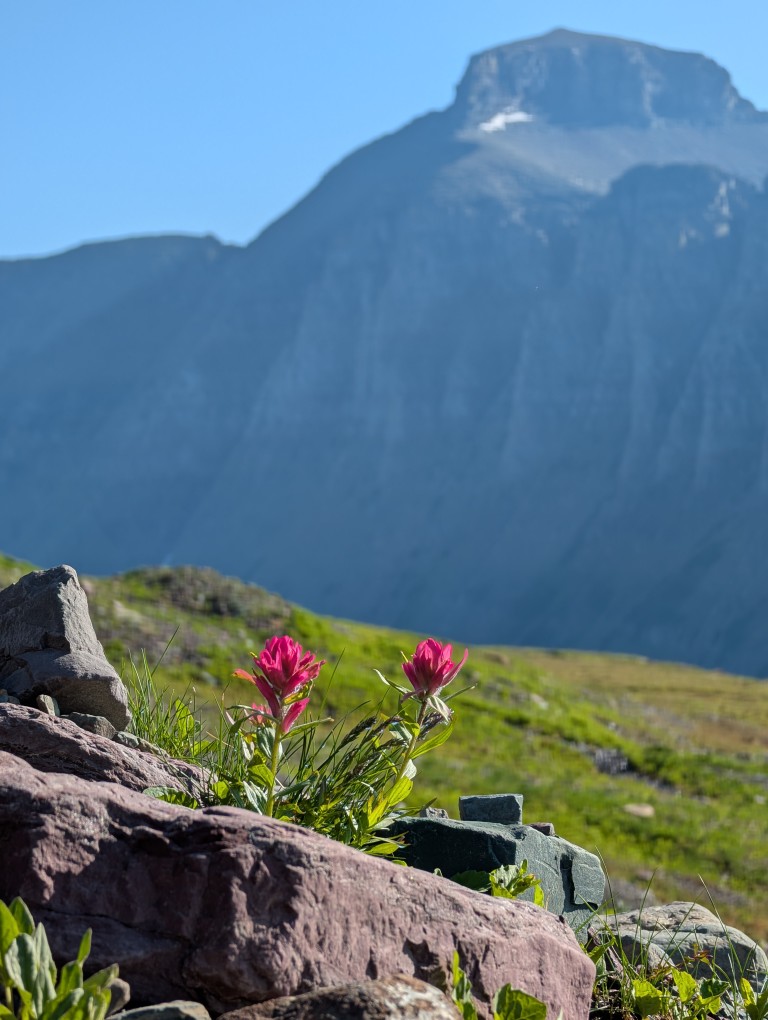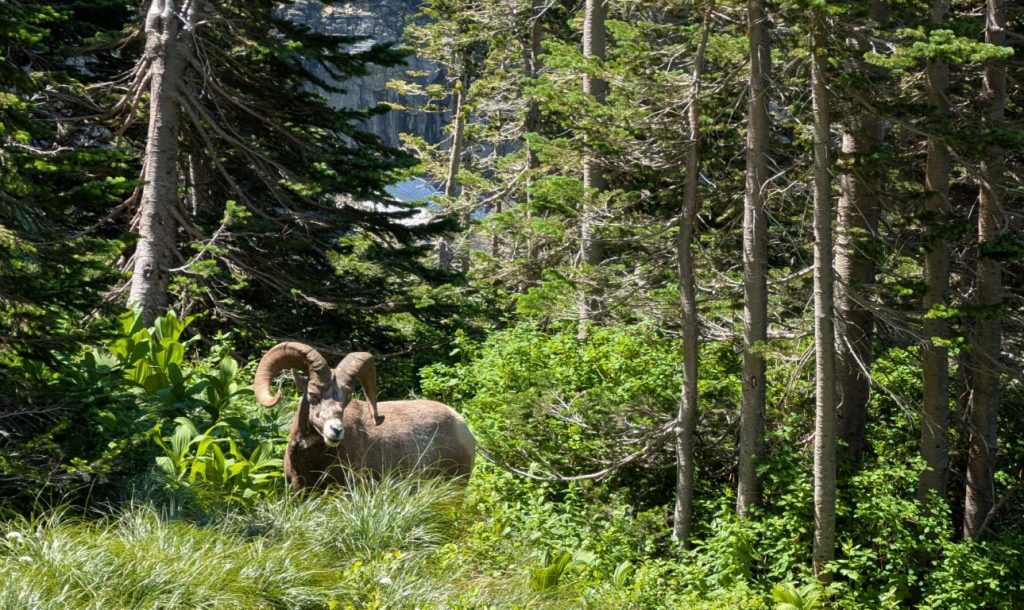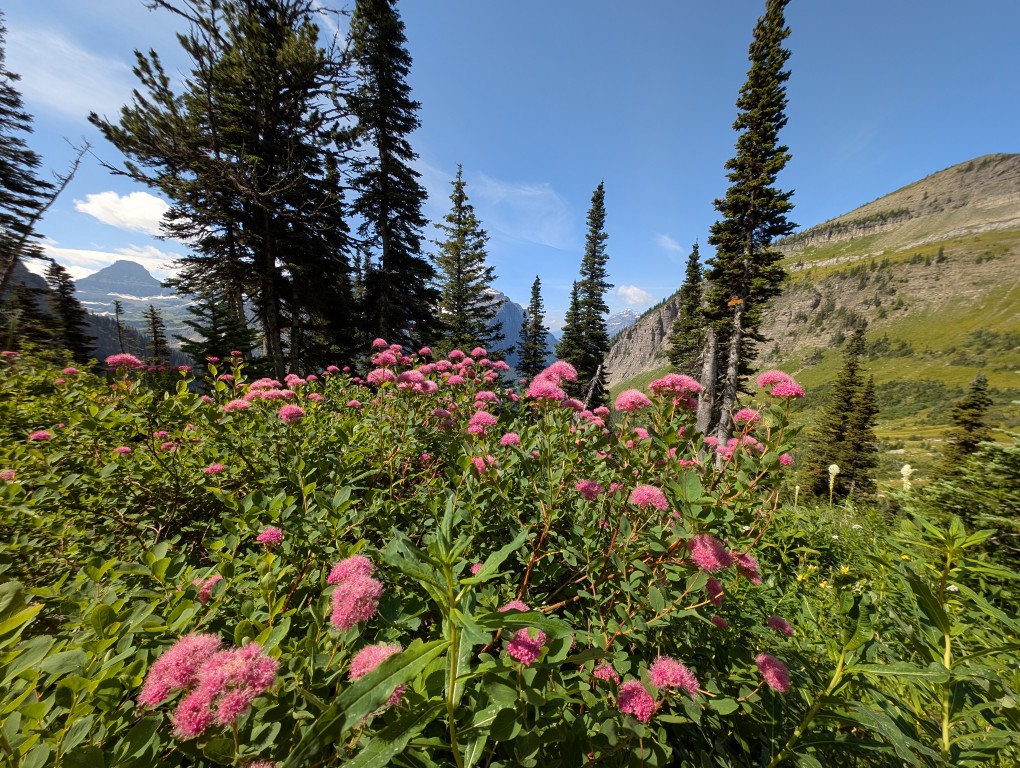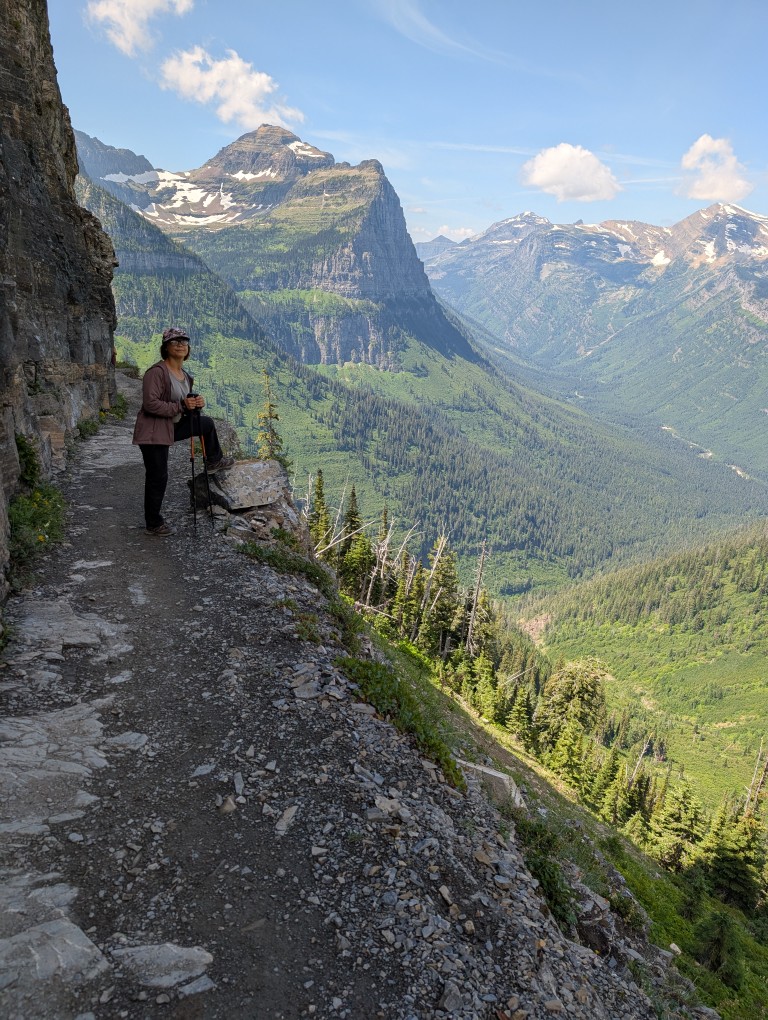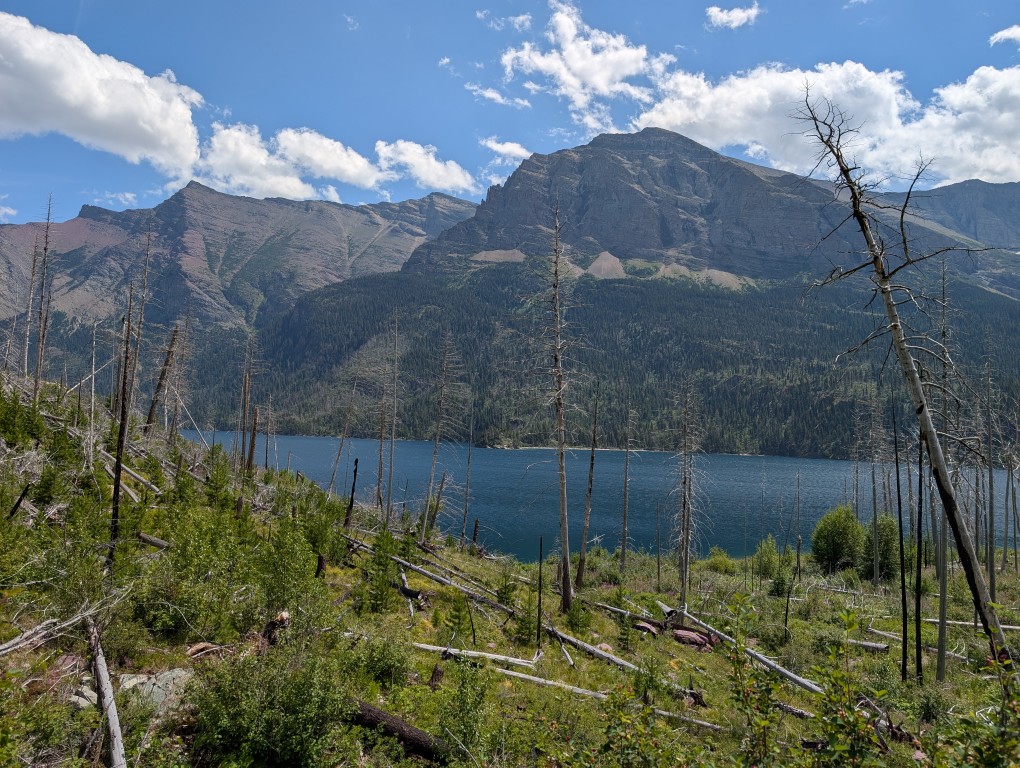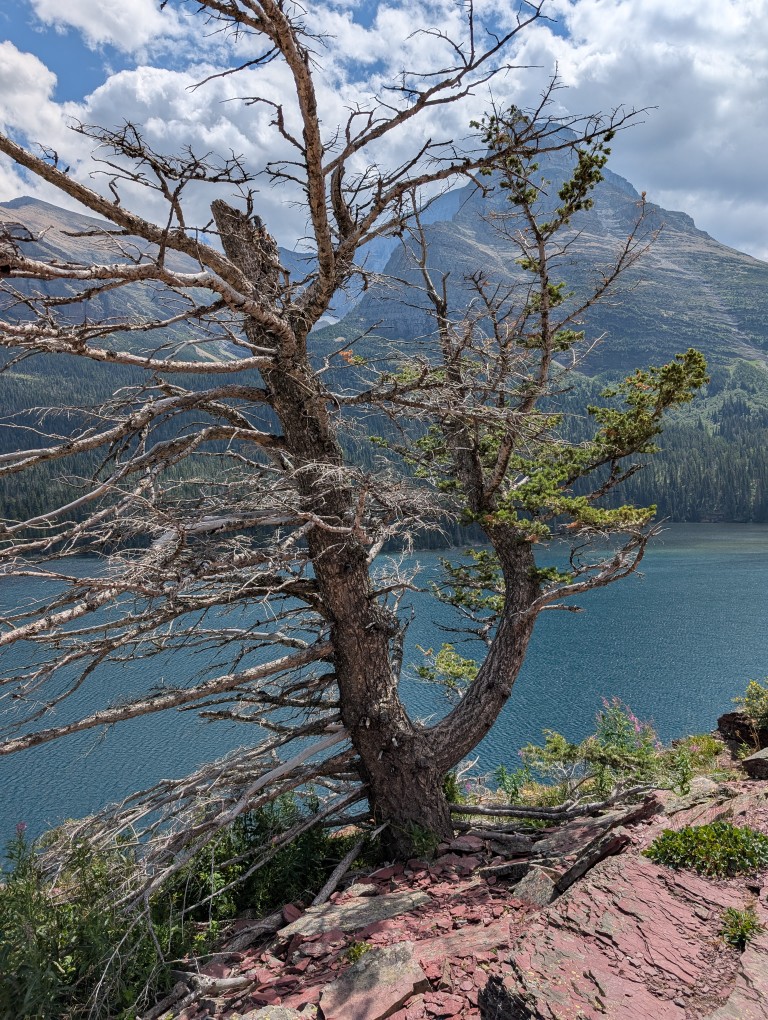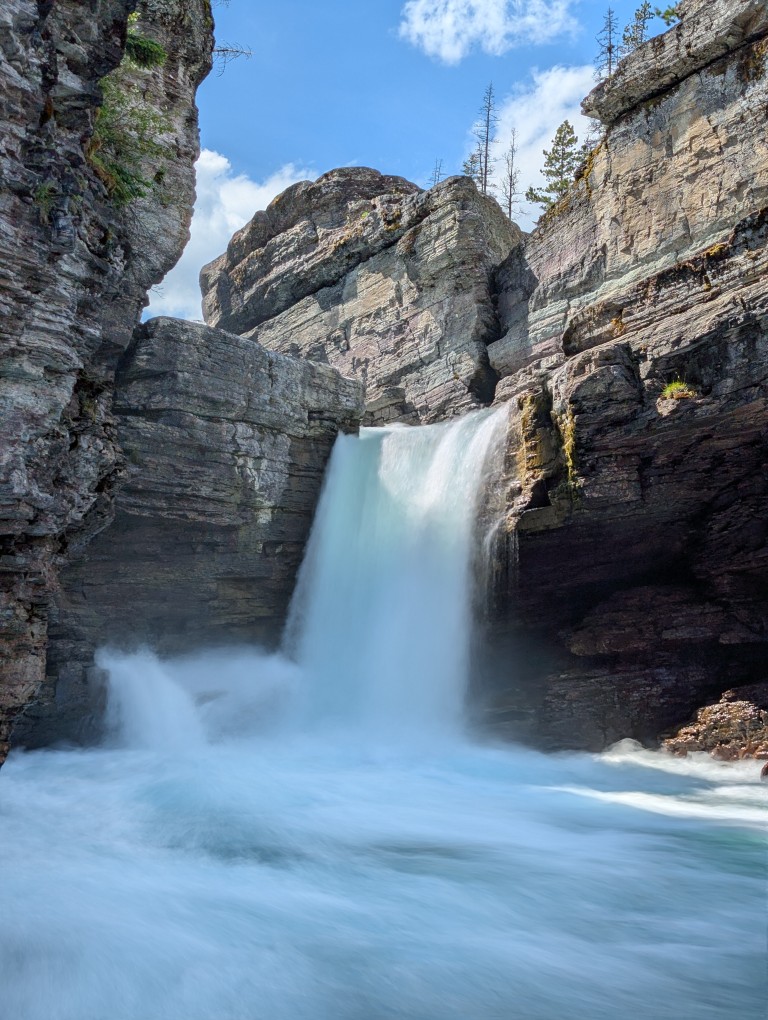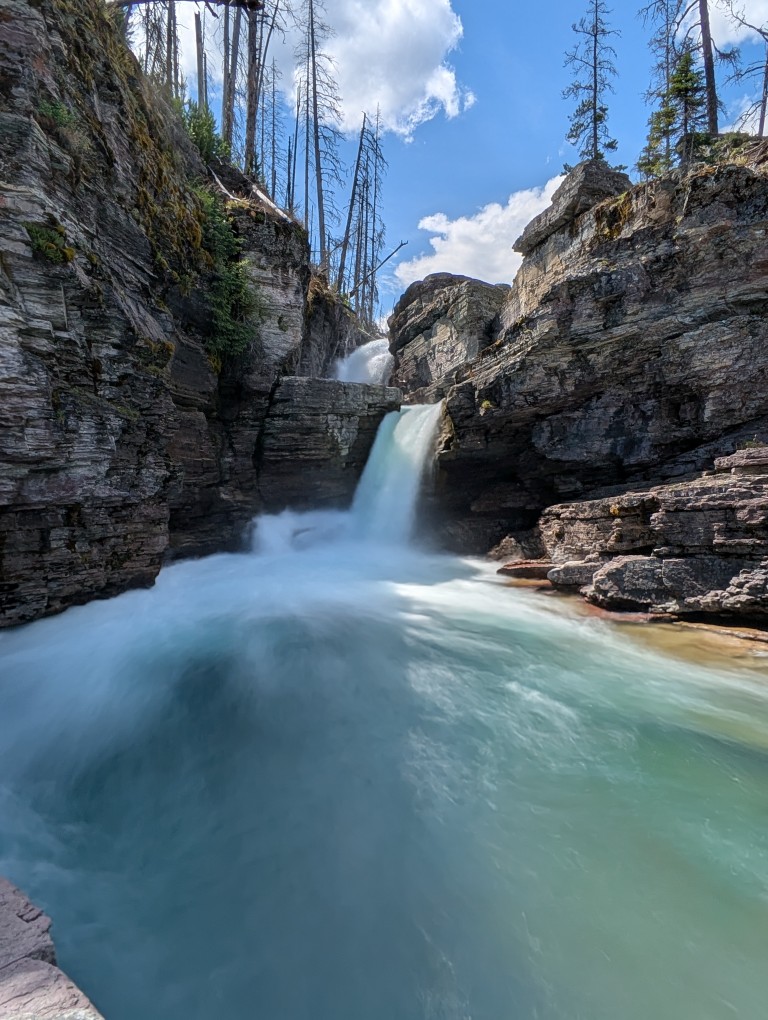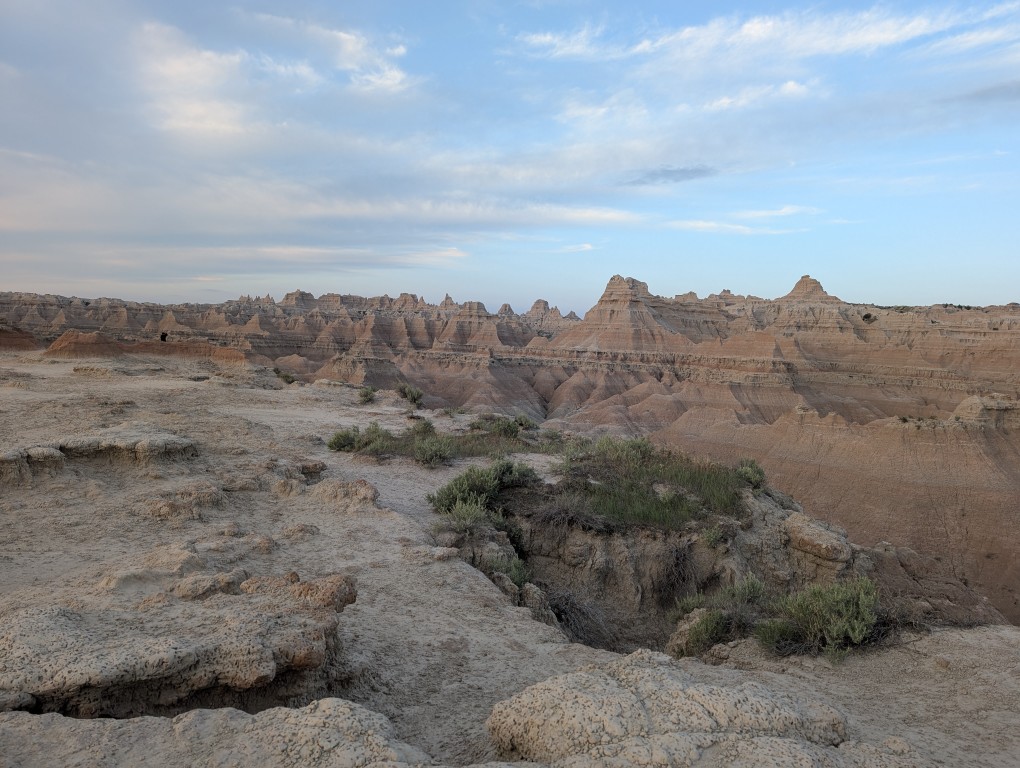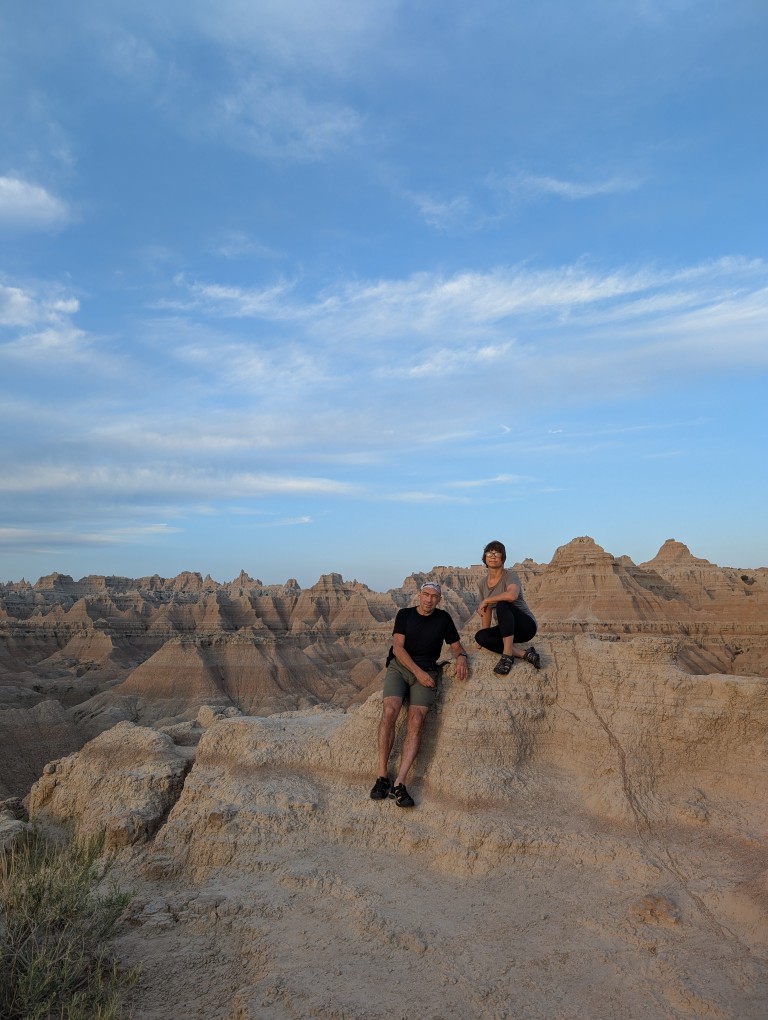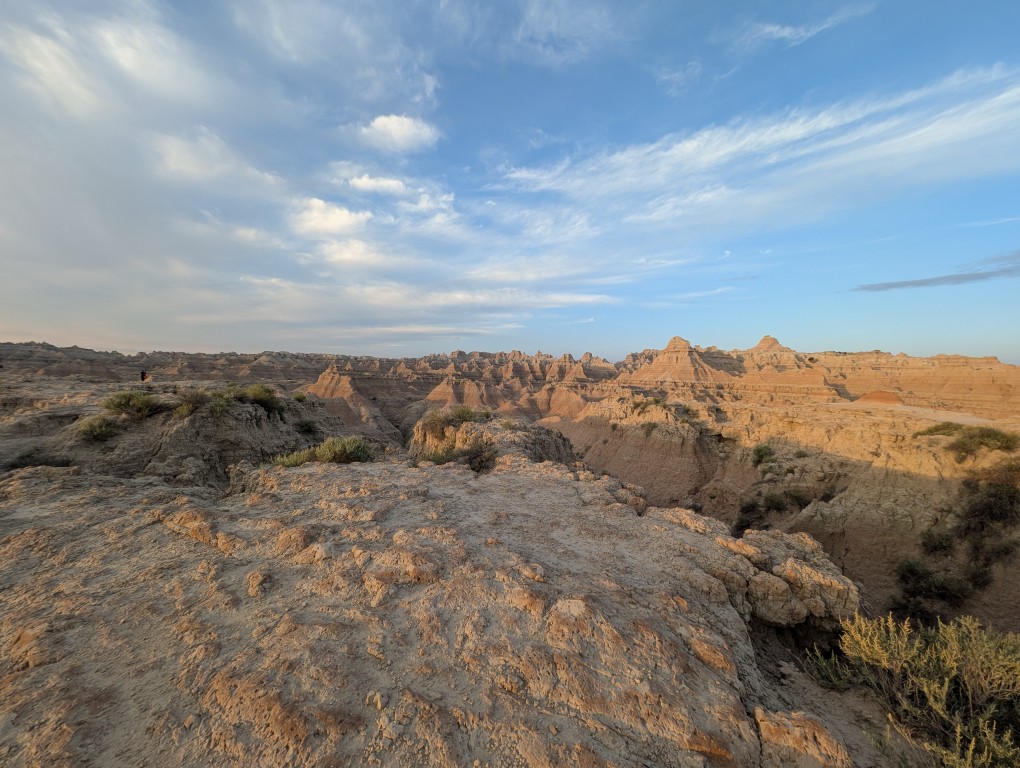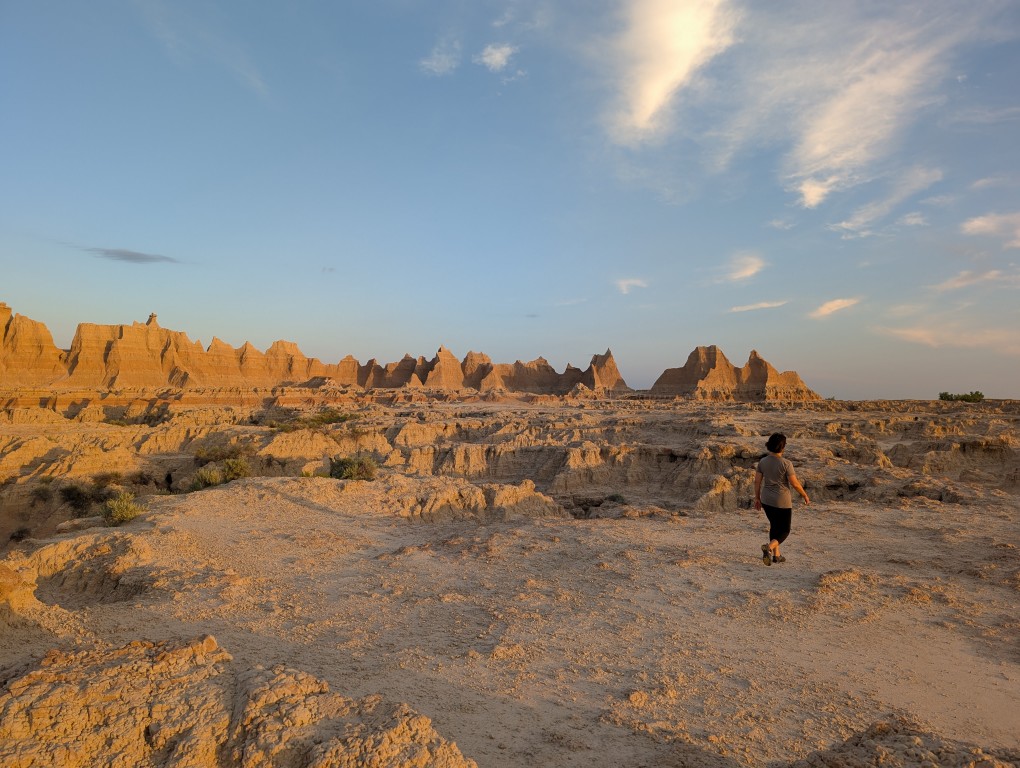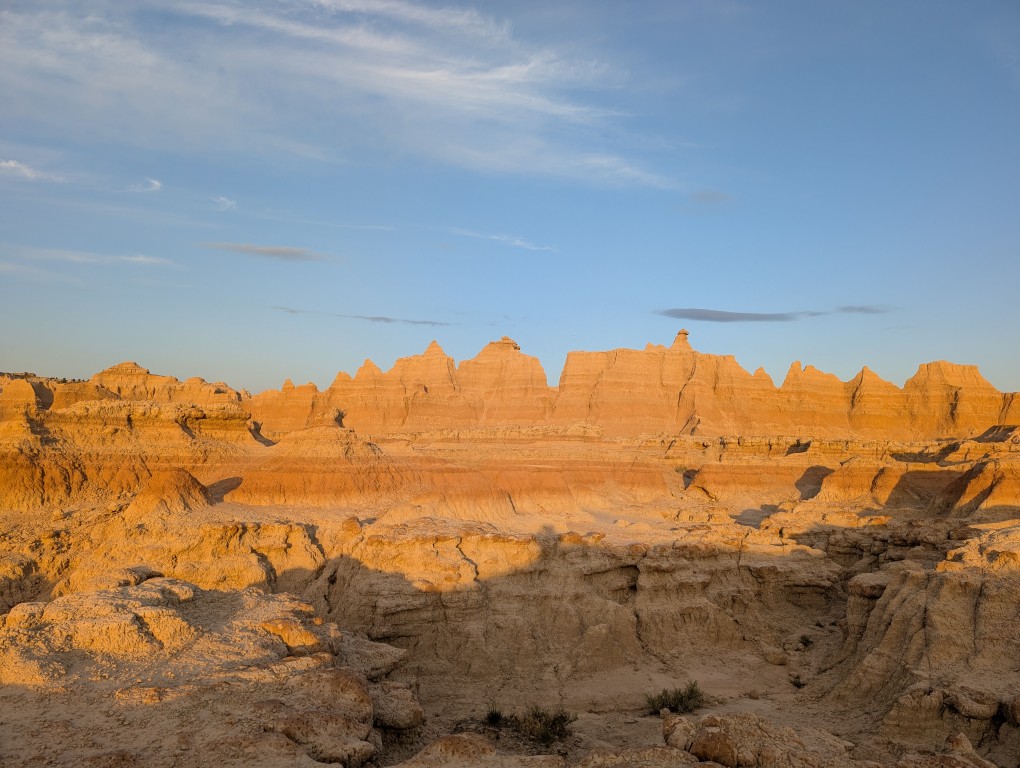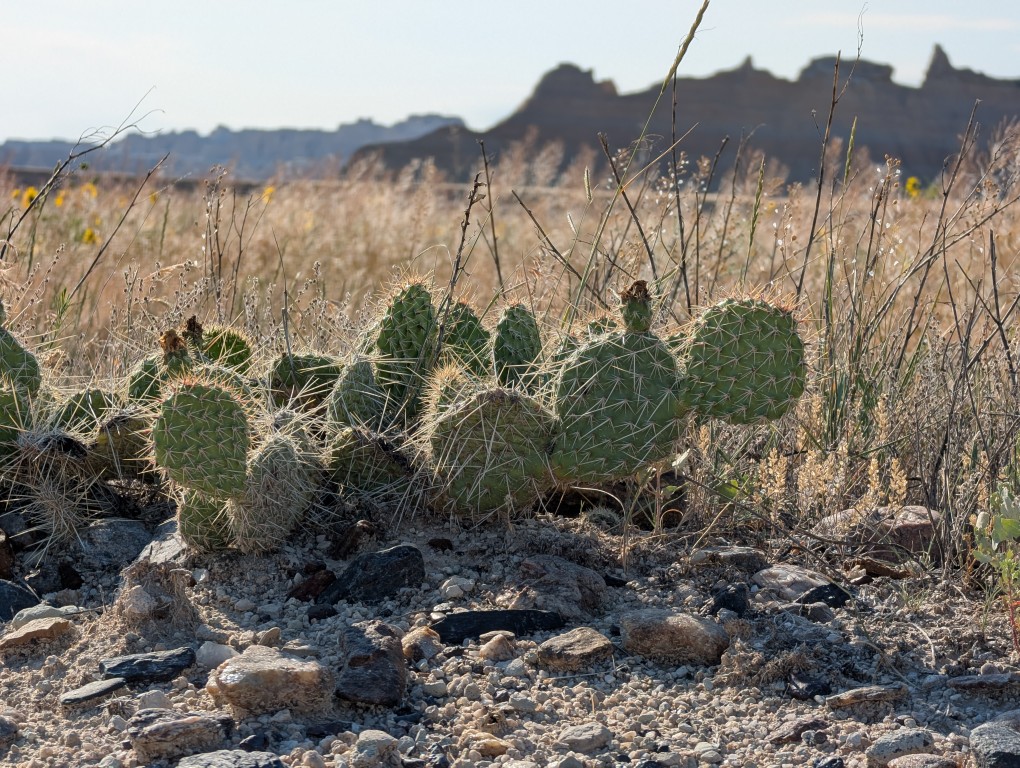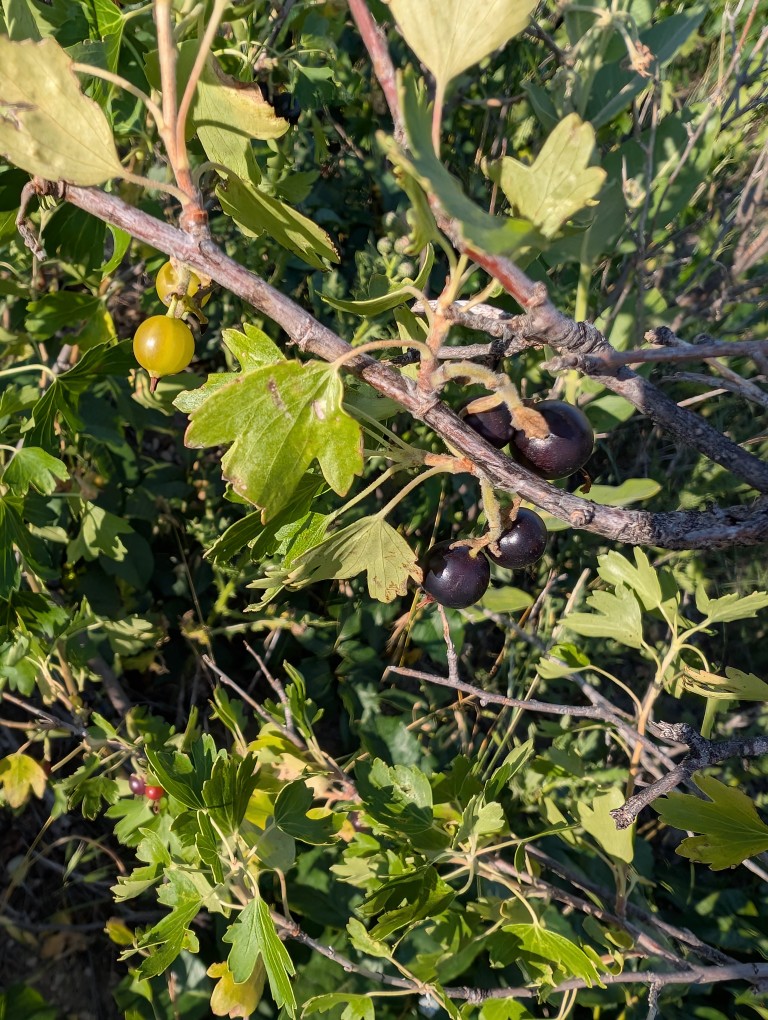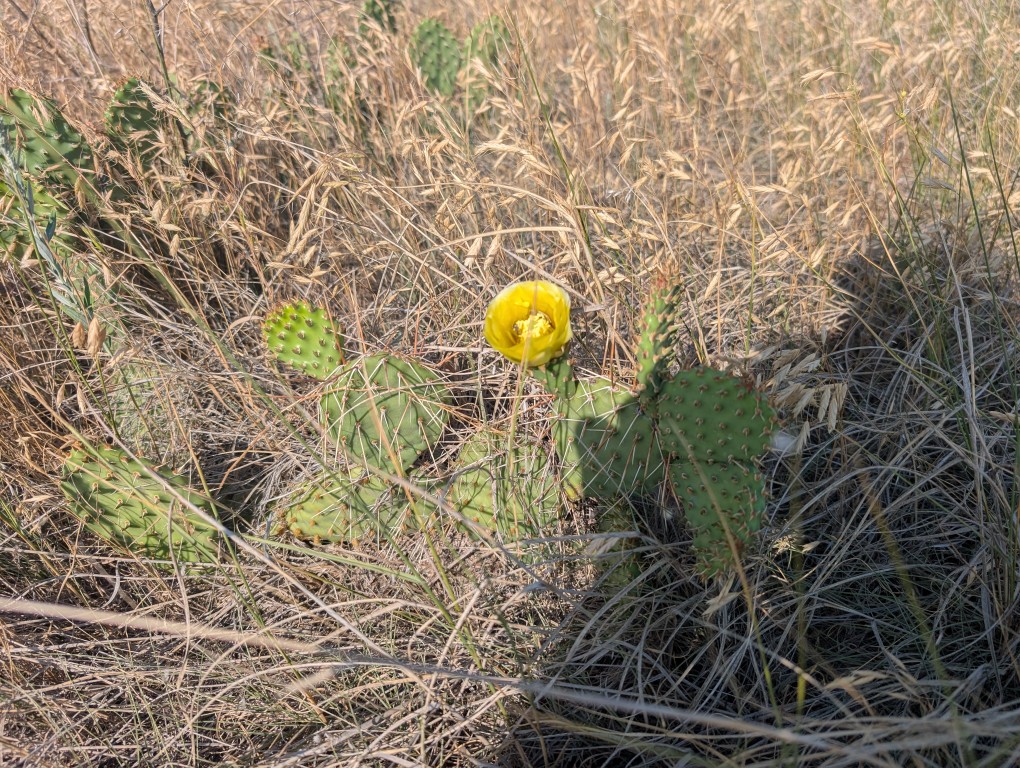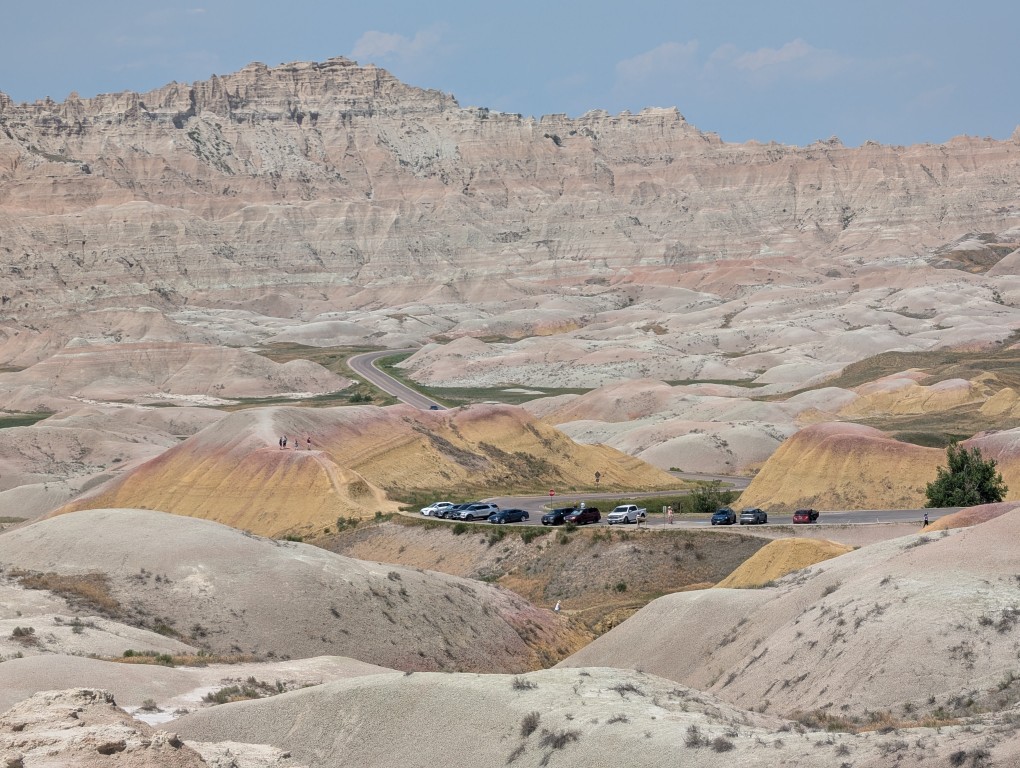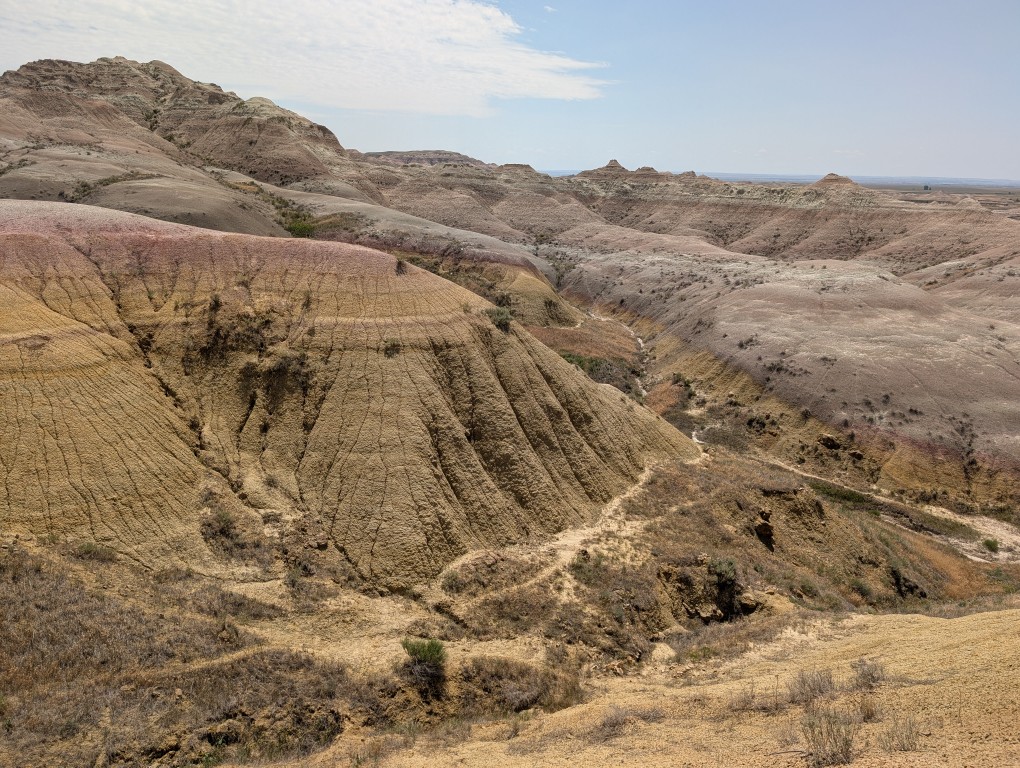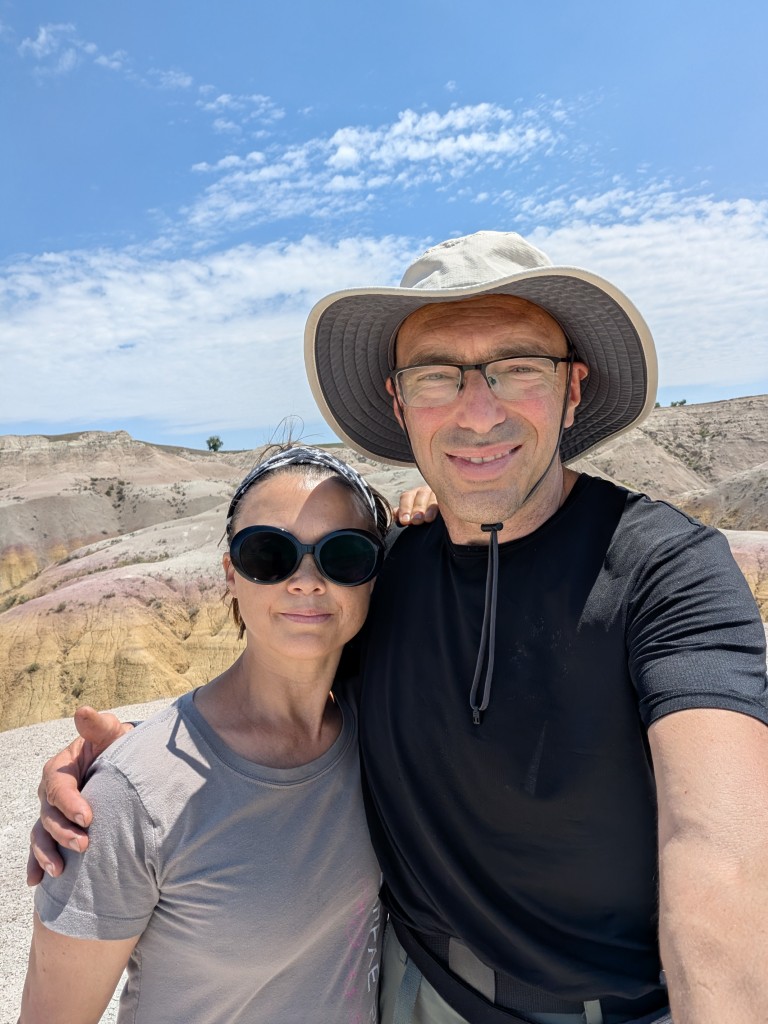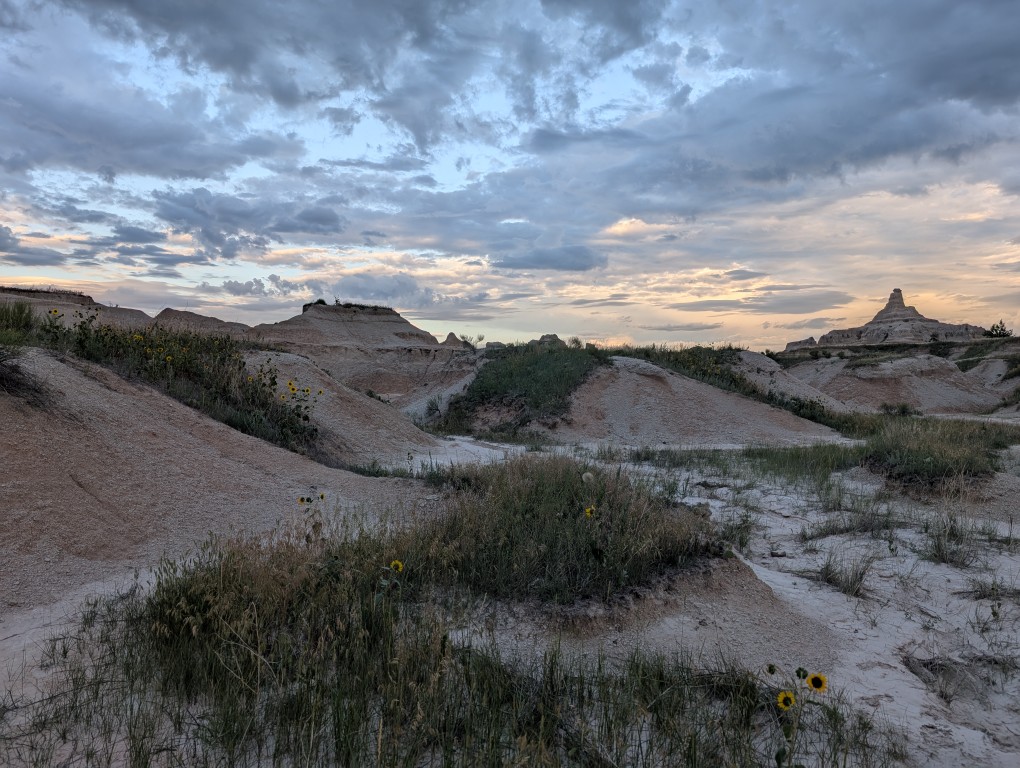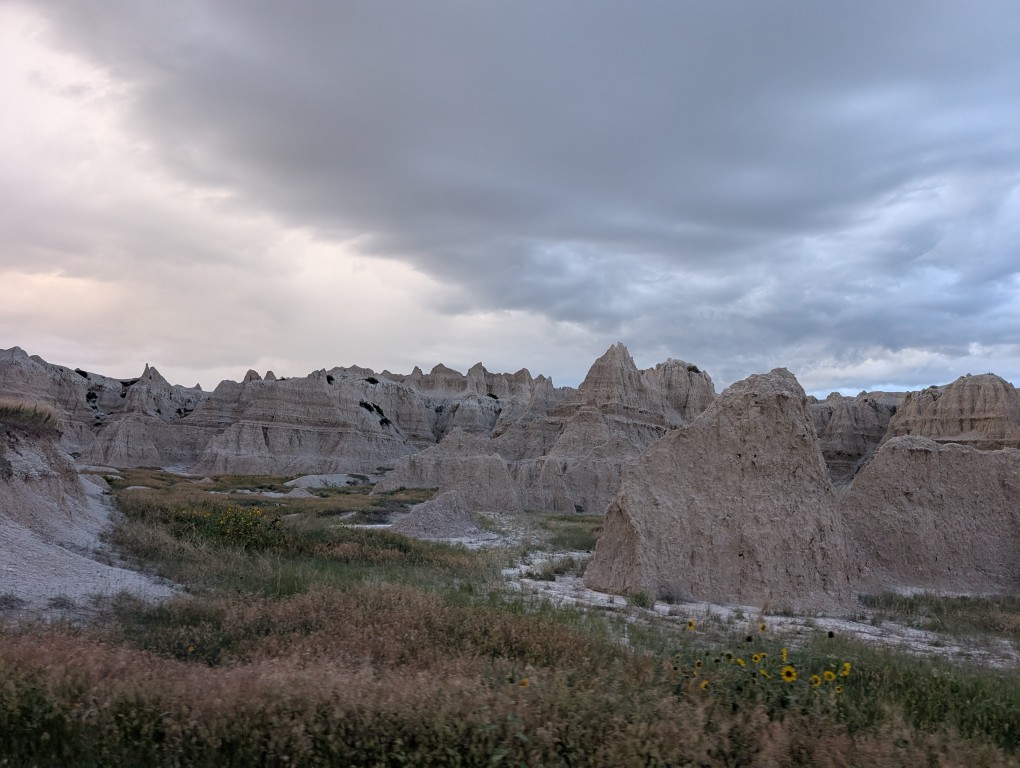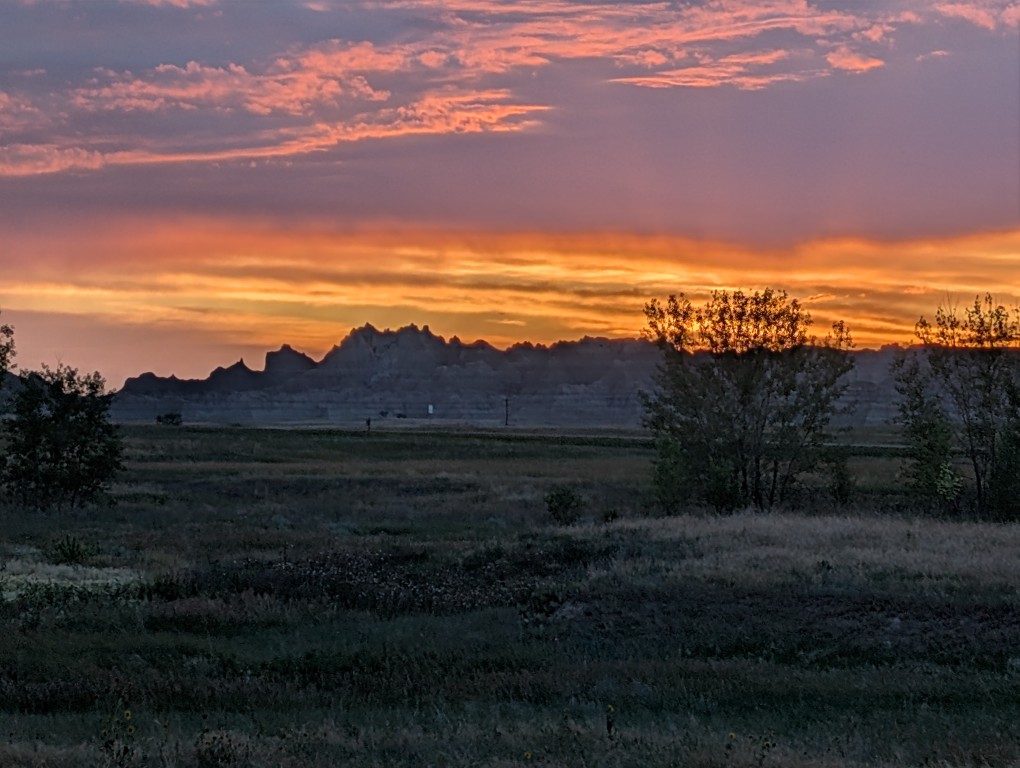Hot spring
We slept well that night. Physical activity and prolonged exposure to fresh air are beneficial for sleep. Denis later remarked more than once that he slept better in the tent. The idea was born that at home we could set him up in the backyard, in a tent, and let him inside to shower, eat, and go to work.
Today we're leaving Grand Teton National Park and heading to Yellowstone. It's not far. Most road trippers plan to visit these two places together. But before we leave, we thought we'd take a dip in a hot spring.
The morning, as we know, is quite chilly in the mountains. That didn't stop Denis, and I, shivering, decided against taking a dip. At first, there was a dewy trail, then a river blocked our path. For some reason, there was no bridge, so we had to wade across. It wasn't much fun in a temperature of +9°C. When we arrived at the spring, a fan of morning hot baths was already soaking there. He sat relaxed in the spring, looking out at the mountains bathed in morning light and listening to country music.
He was middle-aged and potbellied, with a drooping mustache and long gray hair. He was also completely naked. Closer to nature than ever. He greeted us casually and struck up a light conversation. Easy chat. Who we were and where we were from. He was from Idaho, came here often, and loved this place. Denis climbed into the spring, and I waded in ankle-deep and also tried to enjoy the morning view of the mountains, but it didn't work out because I was attacked by a swarm of wild, vicious mosquitoes. I immediately decided to do my exercises standing in the spring, as I had left my mosquito repellent in the car.
- Dear friends! Let's begin our morning exercises: arm rotations, torso rotations, head rotations, and slapping the bitten areas! Okay, good! Be more alert! Be more energetic! Let's move on to water treatments! Oh, yes, we've already moved on.
Denis, apparently, was also bothered by the mosquitoes or he felt sorry for me, he didn’t sit for long and we drove on.
Popular science
Yellowstone is just a stone's throw away; half an hour and we're there. That hot spring was the first sign that the geysers were very close. And then it was like we were in a science fiction film.
And indeed, this park was well-known long before we arrived in America. It was probably the unforgettable Senkevich, host of the "Film Travelers' Club," who told us about it on TV. It was a great show. I remember circling it in a bold oval in the paper TV program guide, along with cartoons and "In the Animal World." Later, in the 1990s, it became possible to watch National Geographic films. You can almost hear the announcer's voice behind the screen:
- Yellowstone National Park
Founded in 1872, Yellowstone National Park is the world's first national park, renowned for its geothermal landscape and geysers. The famous Yellowstone National Park is a biosphere reserve and, thanks to its unique topography, is listed as a UNESCO World Heritage Site.
We enter the park from the "West Thumb." The first impression is that this place has a life of its own. The geysers are both beautiful and dangerous. Filled with a wonderful turquoise hue, they gurgle and sigh, emitting mists of sulfur.
We later learned that the bluer the water, the hotter the spring. Getting too close is prohibited. We walk only on specially constructed wooden walkways. The crust that covers the spaces between the geysers creates the illusion of solid ground, but in reality, you could fall into hell, into a fiery Gehenna. Bison, however, apparently are allowed in. Their tracks are visible in large numbers from everywhere.
Geysers are like people: no two are alike, even if they look similar. This depends on a variety of factors: depth, temperature, rock and soil composition, age, and much more.
Some geysers are coloured in the brightest shades of blue-green and orange, others are pale, with a whitish edge, and others are turbid, like clayey slurry.
Some release occasional bubbles, others seem to boil, and still others gush with varying frequency and power. Many simply "breathe" steam.
The place where we first saw geysers is on the shore of Yellowstone Lake. Crystalline water fills the caldera of a volcano so huge and ancient that scientists didn't discover it right away. The diameter of the crater measures several square kilometers of lake water and forest (85 by 45 km). It's hard to imagine how powerful the volcano must have been in its youth. Incidentally, volcanologists haven't ruled out the idea that Yellowstone will one day awaken. Imaginative filmmakers have long since dreamed up a horror story about it.
Enchanting
We arrive at our next destination around midday. The large parking lot is filled with cars, and we park on the side of the road, quite a ways from the trailhead leading to the overlook. It's located on a hillside overlooking Yellowstone's crown jewel, Prismatic Hot Spring.
This is one of the largest, and therefore the most vibrant and visited, springs. It's a magical sight: bright turquoise water, edged in yellow and orange, the size of a small lake. From afar, people can be seen walking around it on a wooden platform.
It is not customary to linger at the observation deck for long: take a few photos and leave, because more and more people keep arriving.
The flow of tourists thins out if you follow the trail from the observation deck to Fairy Falls.
And only a few people reach the Imperial Geyser. And completely in vain! The trail is easy, with no elevation changes. The only downside is that it winds through open space for a long time. The trail first leads to a tall, but not very powerful, waterfall.
The stream has carved a shallow cave in the rock, creating a small pool. Those in the know bring bathing suits. How pleasant it must be to find yourself in a shady waterfall on a hot day! But we decide to move on. The trail then leads us through the forest and becomes more pleasant. Eventually, we come to an orange stream that flows into an orange swamp.
This brings to mind a song about everything being orange. And the water was warm. Walking along a path alongside a stream, we come to the Imperial Geyser. This is one of those geysers that gush with remarkable persistence. The geyser is located away from popular spots. It's not fenced off by a walkway, but you don't want to get any closer, it's so violent.
The trail continues up the slope, leading deep into the sun-baked hills. We decide to just take a look at the geyser from above and turn back. Near the stream, Denis suddenly gets the idea to soothe his poorly cracked heels in the hot, and presumably healing, water. Even though we've already had a hot bath today, another one won't hurt. I waste no time, fortifying myself with wild strawberries and serviceberries and "singing orange songs.".
This time, our temporary shelter is a campsite near Lewis Lake. Previously, we camped on the shores of Jackson Lake. I note again that very few Native American names have survived in Wisconsin and Montana, but it's a different story here in Michigan. The hot day quickly turns into a cool evening as the sun sets. After dinner, we manage to admire the sunset over the lake before retiring to bed.
Go to main page of the trip.

